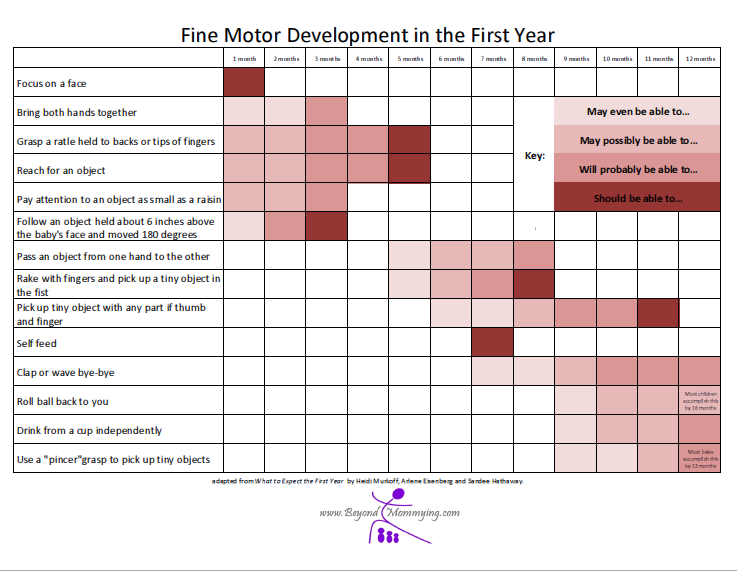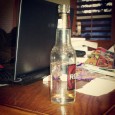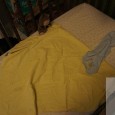Fine motor coordination is one of important elements of child development but is also the most overlooked. Most people watch a child’s gross motor development closely, noting when a baby rolls, sits, crawls, stands and walks. We also obsess over language development, getting excited with each new sound, “did you hear that? He just said ‘mama’!” And more and more parents are worrying about social/emotional development by forcing early play-dates and focusing on “attachment parenting” principles all aiming to help children develop into confident and sociable children.
But when was the last time you saw a mommy get excited about a child putting a toy in their mouth or raking the floor to pick up a tiny little bead they found on the floor? These skills are often seen as inappropriate or unsanitary and are discouraged but these seemingly irritating habits are actually really important fine motor skills which children need to become successful in writing, completing puzzles, using scissors and building block towers. As adults, we use these developed fine motor skills whenever we use a touch device, build or fix something and button our clothes.
Like all other skills, fine motor skills develop over time and are not always apparent as “fine motor” skills in young babies. Many of the skills are seen as just normal movement and since these skills develop slowly over time compared to other skills, the “first” isn’t caught like the first steps and first word. In newborns, these fine motor skills show up as hand-eye-coordination and developing an understanding of cause and effect. A few months ago I would joke that Doodle’s hand-eye coordination involved “if it’s in my hand it will go in my eye” as everything he wanted in his mouth would end up near his eyes before sliding down his face into his mouth. He has now pretty much mastered the hand-to-mouth connection and anything in his hands (or near his face) including toys, fabrics, his shirt and my nose end up in his mouth. He’s also figured out the cause and effect aspect of things; he knows which toys make noise/light up and how the make it happen.
In the first 3 months, fine motor skills involve bringing hands together and near their face; opening and shutting hands; grasping objects such as adult fingers and toys; and swiping/trying to grab at suspended objects, usually with both hands at once. By 6 months fine motor skills become more refined and babies begin to reach for and grab objects with one hand at a time; transferring objects between hands; putting objects into their mouth; and using a raking motion to pick up small things (fingers splayed open and grabbing with whole hand. Doodle is raking the floor of the dance studio, feeling the texture in the picture below).
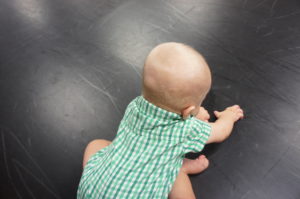
Like any other developmental skill, there are many ways parents can help babies develop fine motor skills:
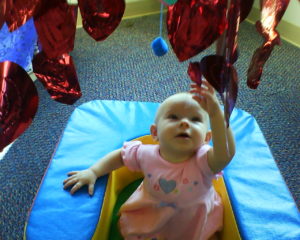 Reaching, Grabbing and Grasping: In young babies who are not yet reaching and grabbing, you can encourage grasping by placing thinner toys or your finger by baby’s knuckles when fisted which will encourage them to open their hand and grab the object. For babies who are starting to grab, place objects hanging down in front of them to just above their tummy to encourage them to reach up and grab the object (this works best with objects that make noise such as rattles or things that play music when pulled) as baby gets better at grabbing you can raise the object to encourage reaching and grabbing with one hand.
Reaching, Grabbing and Grasping: In young babies who are not yet reaching and grabbing, you can encourage grasping by placing thinner toys or your finger by baby’s knuckles when fisted which will encourage them to open their hand and grab the object. For babies who are starting to grab, place objects hanging down in front of them to just above their tummy to encourage them to reach up and grab the object (this works best with objects that make noise such as rattles or things that play music when pulled) as baby gets better at grabbing you can raise the object to encourage reaching and grabbing with one hand.
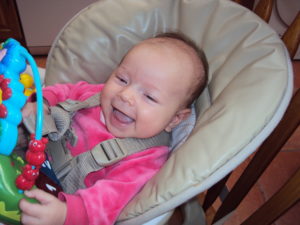 Cause and Effect: Toys that play music or make an obvious noise when hit are great for teaching early cause and effect. Toys where baby has to do something such as pushing a button to cause something else to happen advances understanding of cause and effect in babies are sitting up.
Cause and Effect: Toys that play music or make an obvious noise when hit are great for teaching early cause and effect. Toys where baby has to do something such as pushing a button to cause something else to happen advances understanding of cause and effect in babies are sitting up.
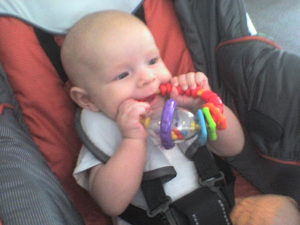
Hand-eye-coordination: Early hand-eye coordination develops as baby puts things in his/her mouth. Very young babies will be most successful with things that are easy to grasp and fit in their mouth such as blankets, burp rags or bibs. As baby gets older, stiffer things like teethers and rattles can be introduced to further develop skills which will be useful for finger feeding at self-spoon/fork feeding later on.


